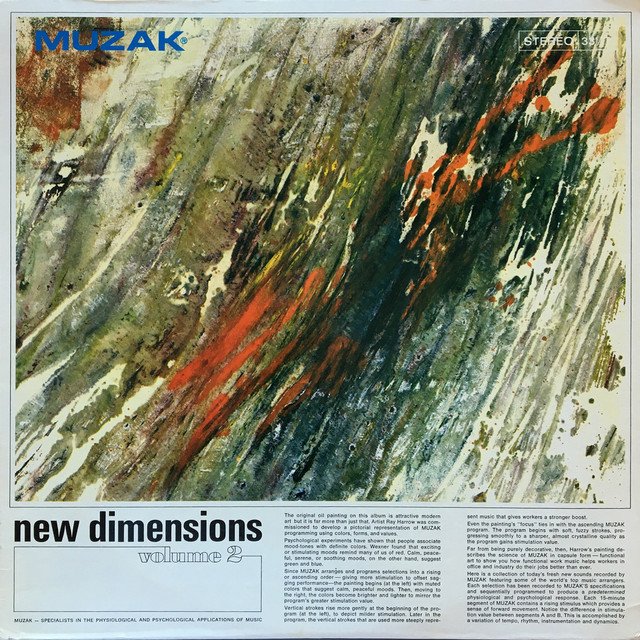The Art of Background Music
This article is an instalment of the MUSE online team’s 2022 back to school theme week.
I’m sure we’re all familiar with the experience of walking into an elevator only to be greeted with the quiet lull of soft instrumental or smooth jazz. As you wait to arrive at your desired floor you may be hyper aware that music has been joining you for the short ride or it may have seamlessly blended into the background, subconsciously reassuring you that the elevator probably won’t break down. Once you begin noticing low-volume instrumental music in public spaces, you can’t stop—it seems to be everywhere. Restaurants, hair salons, grocery stores, lobbies, cafés, you name it.
The key aspect of what counts as “background music” is the way you listen to it. As much as you could try to listen to ambient music attentively for hours, the lack of attention-grabbing sonic qualities, such as lyrics, allows you to listen to it in an accompanying role. The passive nature of background music is fascinating as it disproves the idea that music is made to be the centre of attention. Rather, this type of music illuminates how sound is used to compliment the environment it’s played in. Despite background music’s uninspiring nature and negative perceptions, the genre holds a very important purpose of altering the environment it is played in.
Although any music that’s played in a space to be passively listened to can be categorized as “background music”, the conceptualized genre was introduced in the 1930s. In 1922, George Squier founded Muzak, a company and self-titled genre that produced instrumental background music for commercial spaces. At the time, it was believed that Mazak’s repetitive melodies and simple arrangements would influence consumer behaviours and moods. As a result, these ‘easy-listening’ instrumental tunes were rapidly pumped into commercial spaces, such as grocery stores and shopping centres. Although it was proven to make consumers feel more relaxed and linger in public spaces, which in turn increased sales, it was not without critics. As the 60s rolled around, Muzak was heavily condemned for lacking passion and inspiration, and after being labeled the “sound of the industry”, denied the genre any future success since everyone was on to its tactics.
Although Muzak’s version of background music had a bad rap, the societal desire for background music to be played in public spaces was still present. This forced the genre to switch directions, towards producing passive music in a more positively regarded format and away from the greed of the 60s version. By the 1970s, background music began to include ambient and electronic aspects. Brian Eno, considered the “father of ambient music”, cited Muzak as an anti-inspiration, similarly using sounds to alter the environments and the people within them.
Since the disco era’s impact on the genre, background music has become harder to characterize as it has evolved with technology and modern musical preferences. While in the past you may have walked into a grocery store and heard smooth jazz, modern passive music made for commercial spaces may now closely resemble the top 50s. Additionally, modern background music has evolved to include soundscapes to mimic specific environments such as rain sounds, bustling cafés or whale noises, and to capture vibrations alone, like white noise.
Just as Muzak influenced customers to relax in public spaces, I strive to incorporate background music into my life as a tool to increase productivity and relaxation, and to boost my mood. Comparable to ambient lighting, music contributes to the atmosphere of a space, contextualizing the energy of an environment with noise.
Utilizing background music in your life is not a one size fits all experience — it is truly a soundtrack to your life. As you begin to integrate passive music into your routine, the skill of matching the situation to the album can be tricky, but picked up with some practice. Accompanying this article, I have included a list of some of my all-time favourite background music albums from ambient to jazz.
Let the sounds follow you through wherever life takes you today, tomorrow and the next.
Mother Earth’s Plantasia
by Mort Garson
Pair with: Household Tasks
Mort Garson’s 1976 Electronic Album “Mother Earth’s Plantasia” was initially created for plants to listen to during the rise of electronic music in the 70s. Composed using the Moog synthesizer, Garson’s Plantasia is guaranteed to boost your mood while doing household tasks.
Ambient 1: Music for Airports
by Brian Eno
Pair with: Bedtime
“Ambient 1: Music for Airports” was released in 1978 by Brian Eno. This album was Eno’s first release after he coined the term “Ambient Music” in the late 70s to describe his individual sound. Intended to be listened to in airports, this album will induce feelings of calmness and encourage you to use this space for yourself to reflect on the day. “Ambient 1: Music for Airports” is best listened to at the end of a day before going to bed to encourage daily introspection.
Sounds From the Tiki Hut
by Miles Corbin
Pair With: Cooking
Miles Corbin’s 1999 release “Sounds From the Tiki Hut”, embodies relaxation with the gentle guitars and melodic bongos. This album is best listened to while cooking to energize and reassure you that everything will be alright.
You don't need to take my word for it, this Amazon review perfectly describes the beauty of Miles Corbin’s album…
“One or two guitars, one bongo set, any more instruments is a waste; I love this album. I play it on my GPX HC221B right next to my ear while I write checks to the electric company (a circular process, no?). It's not a whole lot of music; it's not a flood of music; it's not music that demands to be listened to while you are listening to it. You don't have to pay attention to this music. It is just there; a subtle lull tugging you into a better place. A calm tiki place... warm offshore breezes, gentle folding waves, ice-cold beverage with a straw. Toss this one onto your CD tiki stack; I doubt that you'll regret it.”
- Amazon Review of the CD of “Sounds from the Tiki Hut” by Miles Corbin
Muzak: New Dimensions,Vol 2
by Various Artists
Pair with: Cleaning
This 2017 Muzak compilation album pays homage to the original background music of the 1940s. The swingy rhythms and soft instrumental tune makes this the perfect album to listen to while cleaning. Matching Muzak’s goal in the 1940s to induce relaxation among consumers in public spaces, this album will allow you to relax and complete your pushed-off tasks in a more comfortable, sonic environment.
Street of Dreams
by Bill Charlap Trio
Pair with: Meals
“Street of Dreams” is a jazz album released in 2021 by the Bill Charlap Trio. Incorporating the perfect mix of piano, drums, and bass, “Street of Dreams” creates a truly satisfying listening experience. This album is best listened to while eating a meal, acting as ambient lighting in your private space.
Bird World
by Leon Chang
Pair with: Studying
Leon Chang’s 2017 Electronic Album “Bird World” will transport you into a video game with its fast tempo, unique sound effects, and upbeat tone. Bird World is best listened to while studying to occupy your mind and increase focus and productivity.
… and if you’re still looking for more, click on the rest of Kate’s recommendations below:
Header by: Valerie Letts



























